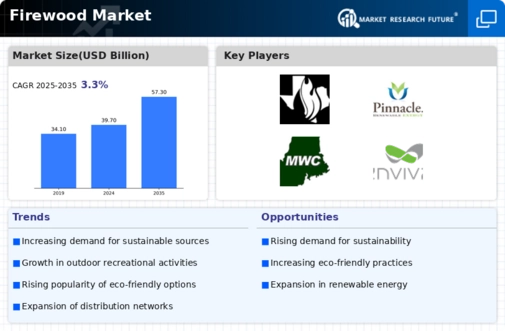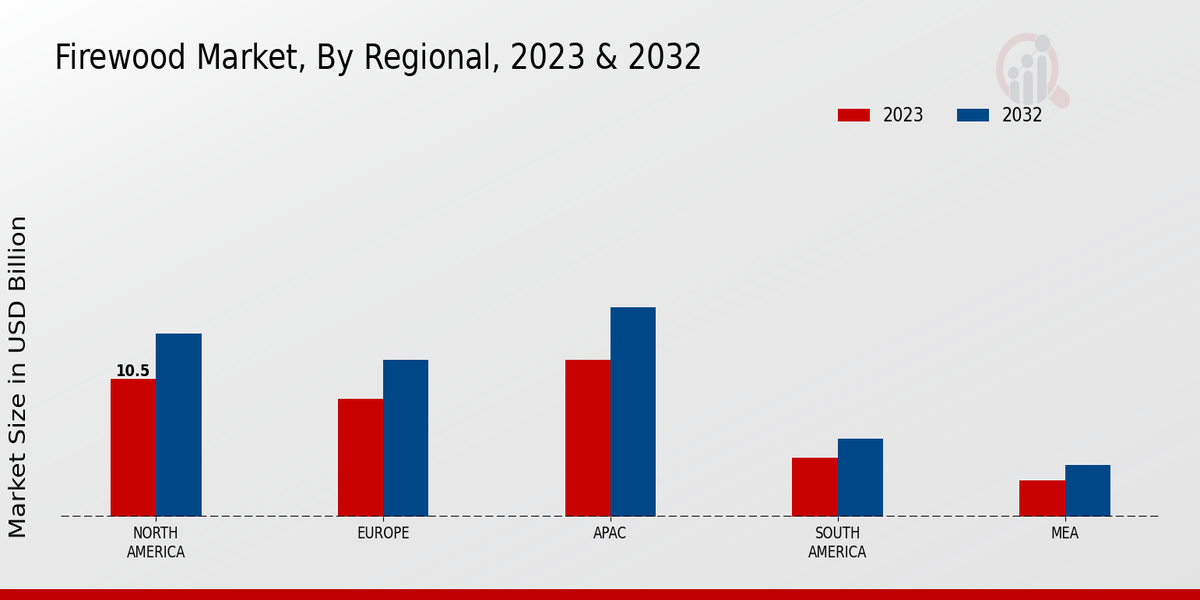Market Growth Projections
The Global Firewood Market Industry is projected to experience substantial growth in the coming years. The market is expected to reach 39.7 USD Billion in 2024 and is anticipated to grow to 57.3 USD Billion by 2035. This growth trajectory suggests a compound annual growth rate of 3.39% from 2025 to 2035. Various factors, including rising demand for renewable energy, technological advancements, and increased awareness of indoor air quality, are likely to contribute to this expansion. The market's future appears promising, with potential opportunities for innovation and sustainability.
Rising Demand for Renewable Energy
The Global Firewood Market Industry is experiencing a notable increase in demand as consumers and businesses alike seek renewable energy sources. This shift towards sustainability is driven by a growing awareness of environmental issues and the need to reduce carbon footprints. In 2024, the market is projected to reach 39.7 USD Billion, reflecting a significant consumer preference for eco-friendly heating solutions. As governments worldwide implement policies promoting renewable energy, the firewood sector is likely to benefit from incentives and subsidies, further boosting its growth. This trend suggests a robust future for the Global Firewood Market, with potential expansion into new regions.
Growth of Outdoor Recreational Activities
The Global Firewood Market Industry is benefiting from the increasing popularity of outdoor recreational activities, such as camping and backyard gatherings. As more individuals engage in these activities, the demand for firewood for campfires and outdoor cooking is rising. This trend is particularly pronounced in regions with abundant natural resources, where firewood is readily available. The market's expansion is further supported by the growing trend of outdoor living spaces, which often incorporate fire pits and outdoor kitchens. Consequently, the industry is poised for growth, with projections suggesting a significant increase in market value over the coming years.
Increased Awareness of Indoor Air Quality
The Global Firewood Market Industry is witnessing a surge in interest related to indoor air quality, particularly in regions where wood burning is common. Consumers are becoming more informed about the health implications of using traditional heating methods, prompting a shift towards cleaner burning firewood options. This trend is likely to drive demand for seasoned and properly processed firewood, which emits fewer pollutants. As awareness continues to grow, the market may experience a compound annual growth rate of 3.39% from 2025 to 2035, indicating a sustained focus on health-conscious heating solutions.
Regulatory Support for Sustainable Practices
Regulatory frameworks promoting sustainable practices are playing a crucial role in shaping the Global Firewood Market Industry. Governments are increasingly implementing policies that encourage the use of sustainably sourced firewood, thereby fostering responsible harvesting and management practices. This regulatory support not only enhances the market's credibility but also attracts environmentally conscious consumers. As a result, the industry is likely to see a steady increase in demand, contributing to its projected growth to 57.3 USD Billion by 2035. Such regulations may also lead to the development of certification programs, further ensuring the sustainability of firewood products.
Technological Advancements in Wood Processing
Technological innovations in wood processing are transforming the Global Firewood Market Industry, enhancing efficiency and product quality. Modern techniques, such as advanced drying methods and automated cutting, allow for better preservation of wood and improved energy output. These advancements not only increase the availability of high-quality firewood but also reduce waste, making the industry more sustainable. As a result, the market is expected to grow steadily, with projections indicating a rise to 57.3 USD Billion by 2035. This growth is likely to be supported by ongoing research and development efforts aimed at optimizing wood processing technologies.






